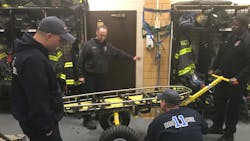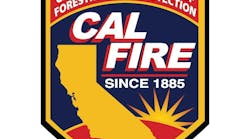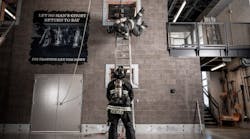When a drill in the fire service is developed, the person who designs the training session faces numerous pressures: competing demands for time, the crew wants the drill to be engaging and job-related, the firefighter or fire officer who conducts the drill wants the drill to improve the competency of the crew. Current understanding of human attention span and learning retention indicates that it might serve us well to shorten the individual training sessions and to increase their frequency.
Microlearning is a training concept by which a single element of material is presented alone as a small chunk of training. Microlearning sessions typically are designed as stand-alone sessions and last from 1–15 minutes. A common window for a microlearning session isn’t longer than 20 minutes, because people are overwhelmed when they are presented with somewhere in the range of five to nine facts. Sessions that last too long can result in a drop-off in retention. This is the reason that TED Talks videos by expert speakers are capped at 18 minutes.
- Edward Tracey will present “Improving the Company Level Drill" and " Significant Incidents and Lessons Learned Since the First Firehouse Expo” at Firehouse Expo 2023.
Generally, microlearning is promoted by its proponents almost exclusively as a method of knowledge acquisition and retention in the digital/e-learning realm. The concept relies on the build out of a larger training system that works mostly digitally to provide on-demand, easily accessible, relevant training. That said, its core principles can improve the fire company- and/or department-level training sessions.
Differences from traditional learning
The use of the prefix “micro” before “learning” indicates what microlearning isn’t: macrolearning. Macrolearning normally is thought of as the entire field of study or the entire body of knowledge that one might be expected to know for a job. Macrolearning can be described as the formal, in-class training programs that we participate in over hours, days or even weeks. Microlearning breaks that larger field of study into multiple, short and easily synthesized learning sessions.
Training that utilizes the principles of microlearning supports macrolearning. Building multiple short drills into the daily routine of the firehouse supplements and enhances formal training. Microlearning works most optimally when it assists with “in-the-moment” training opportunities, when it supplements or allows firefighters to hone what they already know, and when members of a crew are adapting to new technology, tools, gear or equipment.
The core principles of microlearning require that sessions have a narrow focus, that they be short and that they be useful to the learner. The focus is on providing new, practical and relevant information that ties into a single point or concept, promoting learner retention, and preventing overwhelmed or bored learners. To engage the learner’s senses, it’s important that a microlearning session be enhanced with technology, multimedia and/or training props.
Microlearning lends itself to the use of technology and media, which suits our widespread use of digital resources to find answers. (You likely have created, although unknowingly, your own microlearning session when you had a question, found a suitable answer, including via the use of Google, YouTube, Siri and/or Alexa, and applied the results of that answer soon after.) The trainer should be creative and incorporate audio, video, polling, quizzing, problem-solving, case studies and other educational technologies into the session.Mobile technology
A very important aspect of the microlearning concept is that it allows for social and collaborative training. Unfortunately, technology-based learning often routes crews to individual computer screens, but properly designed microlearning sessions can utilize mobile technology to pull us back together.
Around 2016, mobile browsing overtook desktop browsing. Many members of the fire service have grown up with mobile phones, the internet and easy access to information. It’s possible to develop a training topic that pairs hands-on training with mobile technology (smartphone, laptop or tablet), to provide supporting information to allow the crew to learn as a team.
Microlearning in the fire service
The time to retire the practices of pushing play on a 60-minute training video or requiring firefighters to read an article without an objective, crew interaction or practical application has long passed.
Although microlearning evolved with the digital interface in mind, its core principles can be applied to the firehouse and fire academy drill sessions.
Polling of most firefighters likely would indicate that they prefer hands-on training or training where they can apply what they learned. Microlearning lends itself to presenting new or changed information with an immediate hands-on follow up and “learning by doing.”
People who conduct the training have responsibilities before the drill begins. They must develop an objective for the training session and must vet the material to ensure that it’s correct and appropriate.Microlearning drills in practice
One of the best illustrations of a microlearning session is provided in the 1984 movie “The Karate Kid.” In the wax-on/wax-off scene, the instructor, Mr. Miyagi, provides the student, Daniel, with a short lecture and explanation that’s focused on a single activity. After Miyagi demonstrates that “wax-on” happens with the right hand and “wax-off” happens with the left hand, he allows time for Daniel to apply the newly learned skill on his vehicle. Miyagi’s training session is short, simple, engaging and work-related.
Brief and interactive
Using the core principles of microlearning to design your next drill will allow you to adjust for the current understanding of attention span and learning retention. Consider changing your focus to offering more short, interactive, job-related training sessions throughout the shift to develop firefighting, rescue and EMS competency among your crew.








